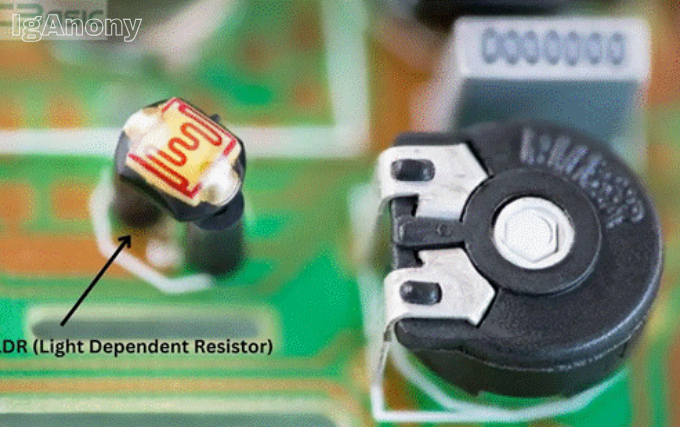In the world of electronics, understanding the basics of components and connections is essential for designing and troubleshooting circuits. Two terms that often come up in various circuit designs are LDR (Light Dependent Resistor) and GND (Ground). In this article, we’ll dive deep into what these terms mean, their applications, and why they are important in your electronic projects.
What is an LDR (Light Dependent Resistor)?
An LDR, also known as a photoresistor, is a type of resistor whose resistance changes depending on the intensity of light it is exposed to. It is made from semiconductor materials, typically cadmium sulfide (CdS), which exhibit a high resistance in the dark and a lower resistance when exposed to light.
How LDR Works:
When light hits the surface of the LDR, photons are absorbed by the semiconductor material. This process frees electrons in the material, decreasing its resistance. The more light the LDR is exposed to, the more electrons are freed, reducing the resistance significantly. In the dark, however, the resistance is high, as fewer electrons are available to conduct electricity.
Applications of LDR:
• Light Sensors: LDRs are commonly used in light sensing applications, such as in street lights that automatically turn on when it gets dark.
• Automatic Dimming Systems: LDRs help in adjusting the brightness of displays or lighting systems based on the ambient light conditions.
• Camera Exposure Control: LDRs can be used in cameras to adjust the exposure settings automatically based on the lighting.
What is GND (Ground)?
In electronics, GND stands for Ground, a common reference point for the voltage in a circuit. Ground is usually represented as 0V, and it is essential for completing an electrical circuit. Ground acts as a return path for current, ensuring that electric charge can flow through the circuit efficiently.
How GND Works:
In a typical circuit, one terminal of the power supply is connected to the ground. This connection creates a path for current to return to the power source after passing through the various components in the circuit. Without a proper ground, the circuit would not function correctly, as the current would not have a return path.
Importance of GND:
• Safety: Grounding helps in preventing electrical shocks, as it provides a low-resistance path for excess current to flow safely away from components.
• Stability: A solid ground reference is crucial for the stability of voltages within a circuit, especially for sensitive electronic components like microcontrollers and sensors.
• Prevents Noise: A well-designed ground system reduces electrical noise and interference, which is important for the proper functioning of high-precision devices.
The Relationship Between LDR and GND in Electronic Circuits
Both LDR and GND play crucial roles in many electronic circuits, often working together in applications like automatic lighting systems. For example, in an automatic streetlight circuit, the LDR is used to sense the ambient light and adjust the brightness of the light accordingly. Here, the LDR is connected in such a way that its resistance varies with light intensity, which influences the voltage at the input of a transistor or other switching devices that control the light. Meanwhile, the GND connection ensures that the circuit remains stable and allows the current to flow properly throughout the system.
Why Understanding LDR and GND Is Crucial for Your Electronics Projects
Whether you’re working on a simple light-sensitive circuit or a more complex embedded system, understanding the functions of LDR and GND is essential. These components not only ensure your circuit works efficiently but also help in designing robust and reliable systems.
• LDR can be used in various applications where light sensing and automatic adjustments are needed, like in solar-powered devices, camera systems, and more.
• GND is fundamental to any electronic circuit. Ensuring a proper ground connection helps avoid errors, prevent component failure, and improve the overall performance of your circuit.
Conclusion
In summary, both LDR and GND are foundational elements in the world of electronics. LDRs enable light-sensing capabilities in circuits, while GND provides a common reference and return path for current. Understanding how these components interact is vital for designing successful and reliable circuits. Whether you are building your first project or working on complex systems, make sure to account for both LDR and GND in your designs for optimal performance.
FAQ
Q: What is the main difference between LDR and regular resistors?
A: The main difference is that LDR’s resistance changes with light intensity, while regular resistors have a fixed resistance regardless of external factors.
Q: Can I use an LDR for detecting different light sources?
A: Yes, LDRs can be used to detect various light sources. However, they may respond differently to different wavelengths of light, so the choice of material and type of LDR is important for specific applications.
Q: Why is GND important in a circuit?
A: GND is crucial because it provides a common reference point for voltage and allows current to flow back to the power source, ensuring that the circuit functions correctly and safely.







